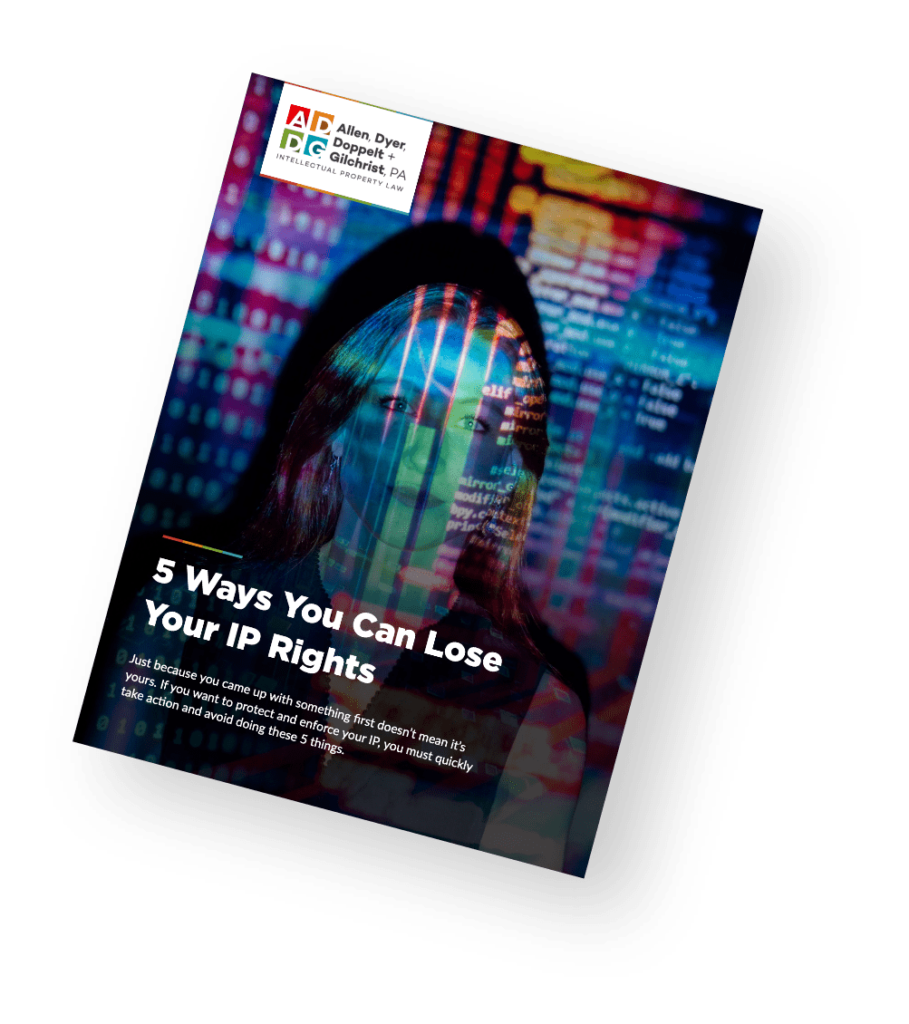In the United States, there are three types of patents, namely utility patents, design patents, and plant patents (see our Patent FAQs for more information on those). If you want to secure protection for a new and useful process, machine, article of manufacture, or composition of matter then you will need to secure a utility patent from the U.S. Patent and Trademark Office (USPTO). The way to do that is to file a non-provisional (aka utility) application, but in some cases applicants do not proceed directly to filing a non-provisional application, and instead begin the patent process with a provisional application. What’s the difference, and when should you consider using a provisional application vs. proceeding directly to a non-provisional application? Read on to find out.
What is a Provisional Patent?
A provisional patent application is essentially an invention disclosure document that secures for the applicant a priority date for the information that is included in the provisional application. A provisional application does not have to meet all of the formal filing requirements of a non-provisional application. For example, it does not have to include claims (the part of a non-provisional application that defines the legal boundaries of the invention which the inventor seeks protection on), formal drawings with reference numerals denoting respective parts, and a corresponding written specification. In this regard, the provisional application may be considered an “informal” application that generally takes less time (and therefore less legal fees) to prepare than a non-provisional application.
Once filed, the applicant may publicly state that the invention is “patent pending” (click here for more information about patent pending status). The term of a provisional application is twelve months from the filing date, at which point the provisional application lapses. If the applicant files a non-provisional application within that twelve-month period which claims the benefit of the provisional application, then the non-provisional application retains the priority benefit (i.e., from the earlier filing date) of the provisional application. If a non-provisional application is not filed within twelve months claiming the benefit of the provisional application, priority from the provisional application is lost.
As such, a provisional application is very useful as a placeholder that allows inventors to establish an early filing date, while they work on further developments to the invention or securing funding for a non-provisional application during the following year. Coupled with the lower up-front cost, this is an attractive option for many inventors and entrepreneurs rather than proceeding directly to a non-provisional application. Another reason provisional applications are useful is expediency – it allows for a relatively quick filing before a potential disclosure to prospective customers/inventors, or in the event the applicant needs to get ahead of a potential time bar to filing from a prior sale/offer for sale or disclosure of the invention.
However, it’s important to note that filing a provisional application does not give you any legal rights with respect to your invention – only the ability to advertise that the invention is patent pending and to preserve an early filing date. Provisional applications are not formally examined by the USPTO, and you will need to file a non-provisional application and undergo the patent examination process before a utility patent can be granted.
What is a Non-Provisional Patent?
A non-provisional patent application, on the other hand, is a formal application that undergoes examination by the USPTO. As noted above, this type of application requires a full description of the invention, including its specifications, drawings, and claims defining the legal scope of the invention for which the applicant seeks protection. Again, a non-provisional application must be filed within one year of the filing date of a provisional application to retain the benefit of the provisional filing date, if a provisional application was initially filed.
If your non-provisional application is approved, you’ll receive a patent that grants you exclusive rights to prevent others from making, using, or selling your invention. However, preparation and prosecution of a non-provisional application before the USPTO is where the bulk of the expense of the patent process arises. Moreover, prosecution of a non-provisional application before the USPTO can take up to several years to complete, which is another factor to consider when filing a provisional application (because delays the time to when a patent is ultimately obtained).
Should You File Non-Provisional or Provisional?
Deciding whether to file a non-provisional or provisional patent application depends on your unique circumstances. If you need to secure funding for your invention or need time to work on further developments, a provisional patent application may be a good choice. Filing a provisional application allows you to establish an early filing date without the expense of preparing a formal non-provisional application.
On the other hand, if you’re ready to apply for a patent and have funding, and there are no immediate time constraints, a non-provisional application may be more appropriate.
Are There Other Benefits of Provisional Patent Applications?
As noted above, a provisional patent application can provide a placeholder or a “priority date” for your invention while you continue to refine and develop it. This can be helpful to prevent someone else from filing a patent application for the same idea before you do. The U.S. is a “first to file” patent system, meaning that the first applicant to the USPTO with an invention is the one who will be awarded the patent, so time is of the essence and the earlier the filing date the better.
Weighing the Risks and Benefits of Provisional Patents
Filing a provisional patent application can be a good option for inventors who have an idea they want to protect, but are not yet ready to file a full non-provisional application. It provides an early priority date and additional time to develop the invention, all while being less expensive and time-consuming than a non-provisional application. However, it’s important to remember that a provisional application is not a substitute for a non-provisional application and does not guarantee a patent. Ultimately, the decision of whether to file a provisional or non-provisional application depends on the specific needs and circumstances of each individual inventor.
If you have questions about whether you should file a non-provisional or provisional patent application, our team of experienced patent attorneys at Allen Dyer is here to help. Contact us to schedule a consultation today!
About the Author
John Woodson is a Registered Patent Attorney who practices in the area of patent prosecution, patent infringement studies, and client counseling

Share This



